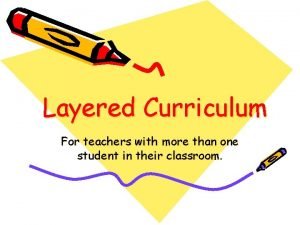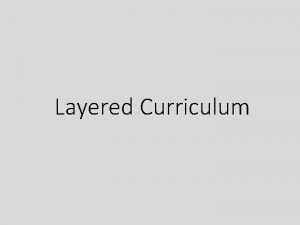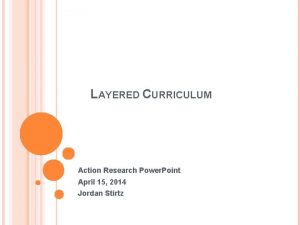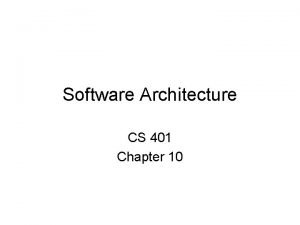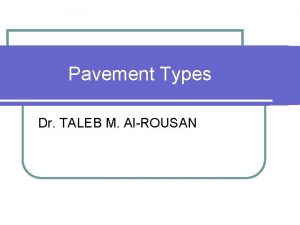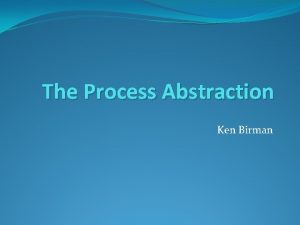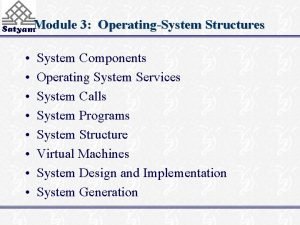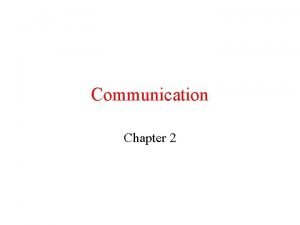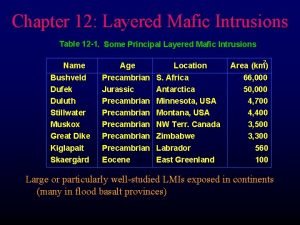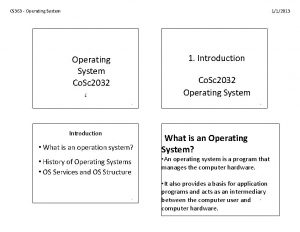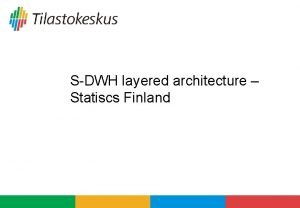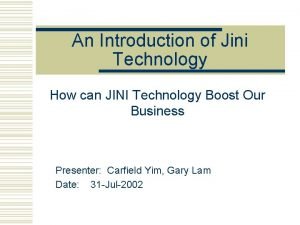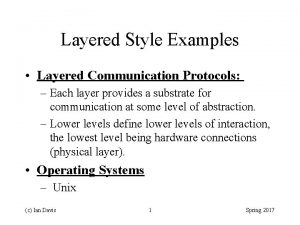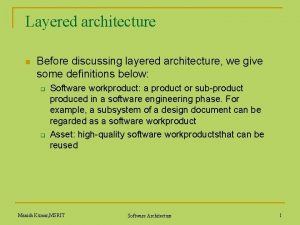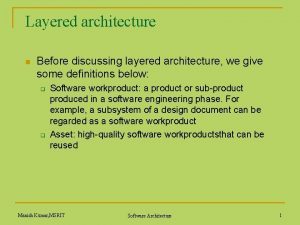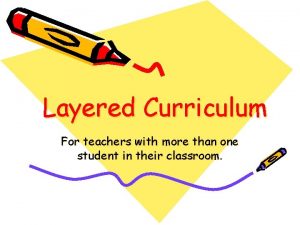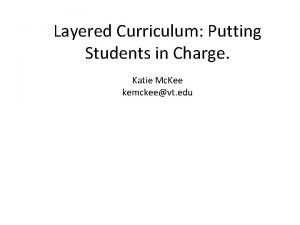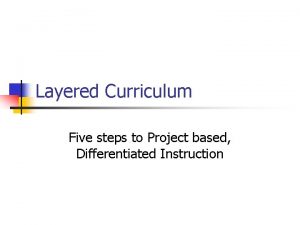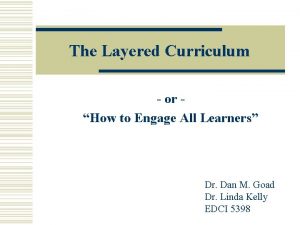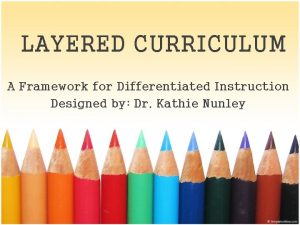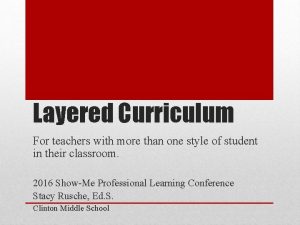Layered Curriculum What is Layered Curriculum Layered Curriculum














- Slides: 14

Layered Curriculum

What is Layered Curriculum? ØLayered Curriculum is a method of differentiating instruction in the classroom. ØAllows each student to learn in a variety of ways simultaneously. Ø Choice Centered. Students choose how they want to learn the material. ØStudent Centered Learning

Student Choice • Empowers students • Gives Ownership • Prompts self learning • Takes Time and Practice “Creatures want control, if you don’t give it to them, they will find ways to take it” -------Nunley

INTRODUCTION TO LAYERED CURRICULUM A • Evaluate and Create: Layer A focuses on students’ critical thinking. Tasks involved within this layer are generally higher order and appear at the top of the Bloom’s Taxonomy pyramid B • Analyse and Apply: Layer B requires students to build upon their acquired content knowledge (from layer C) through the use of various skills such as analysing, applying, manipulating and comparing. C • Remember / Understand: This layer involves teaching students key concepts and content knowledge pertaining to the outcome

Layer C: Remember & Understand Skill Type: : define, describe, duplicate, identify, label, list, match, memorize, name, order, outline, recognize, relate, recall, repeat, reproduce, select, or state information. Example Activities: • Graphic Organizers • Reading • Matching Cards • Worksheets • Notes • Videos • Memorization, • Building flash cards • Summarizing paragraphs

Layer C Key Points: • Set up like a dinner menu with choices for students • Give 3 -4 times as many options that you wish to be completed • Big Variety • Student Created Assignments “All assignments at this C layer are graded through an Oral Defense” Nunley

Menu Example: Layer C

Layer B – Apply and Analyze Skill Type: apply, manipulate, discover, hypothesize and prove, demonstrate, or problem solve Example Activities: • Kinetic Activities • Labs • Webquests • Make Videos • Presentations • Quizzes • Games Indoor/Outdoor

Layer B: Menu Example

Layer A – Evaluate and Create Skill Type: a critical analysis of all the knowledge the students have on the subject and then adds “values, morality, ethics, and personal opinion Example Activities: • Pose critical thinking questions • Extensive projects • Individualized Research Questions • Interdisciplinary projects • Address controversial issues and questions

Layer A: Menu Example

Three Keys to Layered Curriculum: 1. Hold Students Accountable for Learning, Students are awarded points based on what they learned and not what they did. Oral Defense. 2. Offer Choice whenever and where ever possible. “Creatures want control, if you don’t give it to them, they will find ways to take it” 3. Encourage Higher Level Thinking

Get Started • Start Small & Build Up • Teach Students the Process • Practice Days • Personalize for Students & Teacher • Go Digitial

Some Resources From Kathie Nunley
 Layered curriculum
Layered curriculum Layered curriculum examples
Layered curriculum examples Layered curriculum template
Layered curriculum template Double layered membrane that covers the lungs
Double layered membrane that covers the lungs Layered architecture
Layered architecture Flexible pavement cross section
Flexible pavement cross section Layered structure in os
Layered structure in os Explain the concept of layered task.
Explain the concept of layered task. Layered structure in os
Layered structure in os Reasons for using layered protocols
Reasons for using layered protocols Risitic layering
Risitic layering Layered architecture for web services and grids
Layered architecture for web services and grids Sys 363
Sys 363 Layered statistics
Layered statistics What is jini
What is jini
